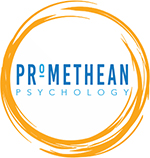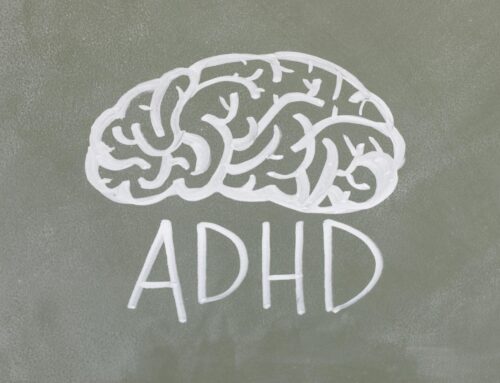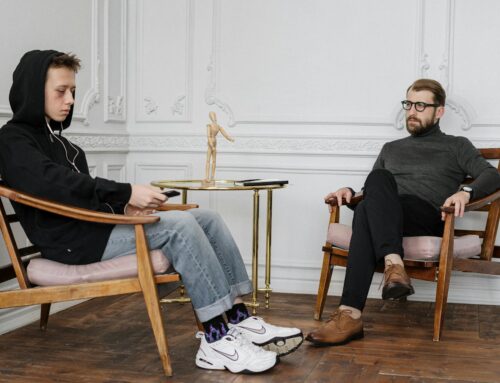In the late 1980’s a professor of special education at a large east coast university had built an illustrious career as a researcher in the field. His research sparked many significant improvements in the way children with special needs are taught. Toward the end of his career, he turned his attention to elementary age children with severe autism. Among many other profound deficits, these children were nonverbal, hardly able to utter a single word. He spent countless hours in classrooms studying these children, determined to find some way to help them. After a while, he had a bit of a lightbulb moment. He posited that children with severe autism possessed the same cognitive and language capacities as other children. Because of their communication deficits, however, they lacked the means to express their hidden language abilities. Inspired by a program in Australia for cerebral palsy patients, he built a small keyboard for the child to use. Accounting for the child’s motor skills deficits, he had a paraprofessional steady the child’s index finger above the keyboard. The idea was that the child would communicate with this keyboard, with the paraprofessionals merely helping to keep the child’s hand steady. It was called facilitated communication.
To the awe of many, facilitated communication exploded as a miracle treatment for severe autism. Some called it not just the biggest breakthrough in autism, but in all of mental health. Suddenly, children with severe autism who had never uttered a word were now communicating deep and complex thoughts through this tiny keyboard. It grew rapidly, with many school districts across the country emptying their budgets to set up a facilitated communication program. Around the time it stated to expand nationally, some weird things started to happen. And by weird, I mean very weird. Schools were noticing that an unusually high number of children using facilitated communication were accusing their parents of sexual abuse. At one school, almost every child with one of these keyboards was making such an allegation. Parents were arrested, children were placed in the custody of the state, and families were torn apart. Eventually, a group of researchers from a separate institution took a closer look at facilitated communication. Through a clever experimental design, they discovered that the autistic student was not the one typing. Through an ideomotor response, the paraprofessionals were unknowingly the ones deciding which keys were pushed, communicating their unconscious thoughts. For lack of a better description, facilitated communication is baloney. And yet as of this writing, it is still used today.
There is an old saying that if it looks like a duck, swims like a duck, and quacks like a duck, then it’s probably a duck. In the field of childhood mental health, it doesn’t always look like a duck, swim like a duck, or quack like a duck. Yet sometimes it’s still a duck. No matter how educated we are, it can be difficult to spot baloney pseudoscience across disciplines. While I may be able to spot baloney in my field, I would mightily struggle to spot it other fields such as cardiology or nutrition. As caregivers of children, when we see them struggle, we want to find them the best help. I’ve seen many families over my career get sucked into a fad therapy with no research support. How can we tell whether a therapy is grounded in science or not? Guided by the seminal work of the late psychologist Dr. Scott Lilienfeld, there are several hallmark warning signs of “baloney” I often advise families to lookout for.
The “NeuroCredibility” Effect
Long ago, some wise marketing professionals realized that including the prefix “neuro” in the name of a product or therapy could hotwire a facade of credence. Therapies that claim to have a neurologically based mechanism of action often sound more legitimate. As an example, a close friend of mind was recently recounting her journey through the mental health system while trying to find help for her teen’s worsening anxiety symptoms. She explained that her teen’s caseworker recommended a new anxiety therapy called “brainspotting.” For a hefty fee, she was promised game changing results for her teen’s anxiety. Proponents of brainspotting argue that certain “spots” in one’s visual field project to the midbrain, where anxiety is processed. Confused? That makes two of us. Currently, there is no research in the field of neuroscience that supports the claim that certain spots in the visual field have a direct connection to the emotion processing areas of the brain. Despite this, brainspotting is one of the most sought-after therapies. Developers of fad therapies such as brainspotting have a habit of using impressive sounding jargon, particularly with extra doses of the words “neuro” or “brain.”
Absence of Boundary Conditions
I’d like to tell you about a new therapy I just developed for depressed children. But wait! It doesn’t just work for depressed children, it also works for kids with anxiety, trauma, OCD, behavioral issues, phobias, anorexia, bulimia, obesity and more! OK, obviously I’m kidding but you get the idea. Scientifically supported therapies always have boundary conditions and are not the best fit for every child. For example, cognitive therapy may a suitable choice for a depressed 16-year-old, but not so much for a 7-year-old with severe, recurrent temper tantrums. Many pseudoscientific therapies will claim to work for everyone without any limits or boundaries. If a new therapy I come across has a website, I often search for the section on “who is likely to benefit from this?” If the developers claim “every child” can benefit, I typically interpret this as a red flag and a sign of possible baloney. One day, far in the future, we may have a therapy that effectively targets every behavioral health ailment at once. That day is not today.
Hinging on Testimonials
I was recently looking at the website for a new therapy for posttraumatic stress disorder. I’ll spare you the details of the therapy, but the website is glutted with testimonials presumably from former patients fawning over the results they received. One such testimonial read, “…I tried almost every therapy for years and this literally saved my life.” Testimonial and anecdotal evidence is important, especially in the early phases of developing a treatment. However, it is a mere starting point in the rigorous scientific process. Therapies that fall in the “baloney” category often make up for the lack of scientific evidence by laying the testimonials on thick. Therefore, if a therapy seems to be over reliant on testimonial or anecdotal evidence, that may be a red flag.
With all the baloney out there in child mental health treatments, how do we find approaches that work? Effectivechildtherapy.org is a great resource for parents and anyone who works with children. This website is operated by a group of clinical child psychologists and members of the Division of Child and Adolescent Psychology through the American Psychological Association. They catalog all the evidence-based therapies for a variety of common childhood concerns and even group the therapies based on their level of research support. If you are interested in learning more on how to spot baloney and pseudoscience in psychology, check out Pseudoscience in Therapy by Drs. Stephen Hupp and Cara Santa Maria or Science and Pseudoscience in Clinical Psychology by Drs. Scott Lilienfeld, Steven Lynn and Jeffrey Lohr.






